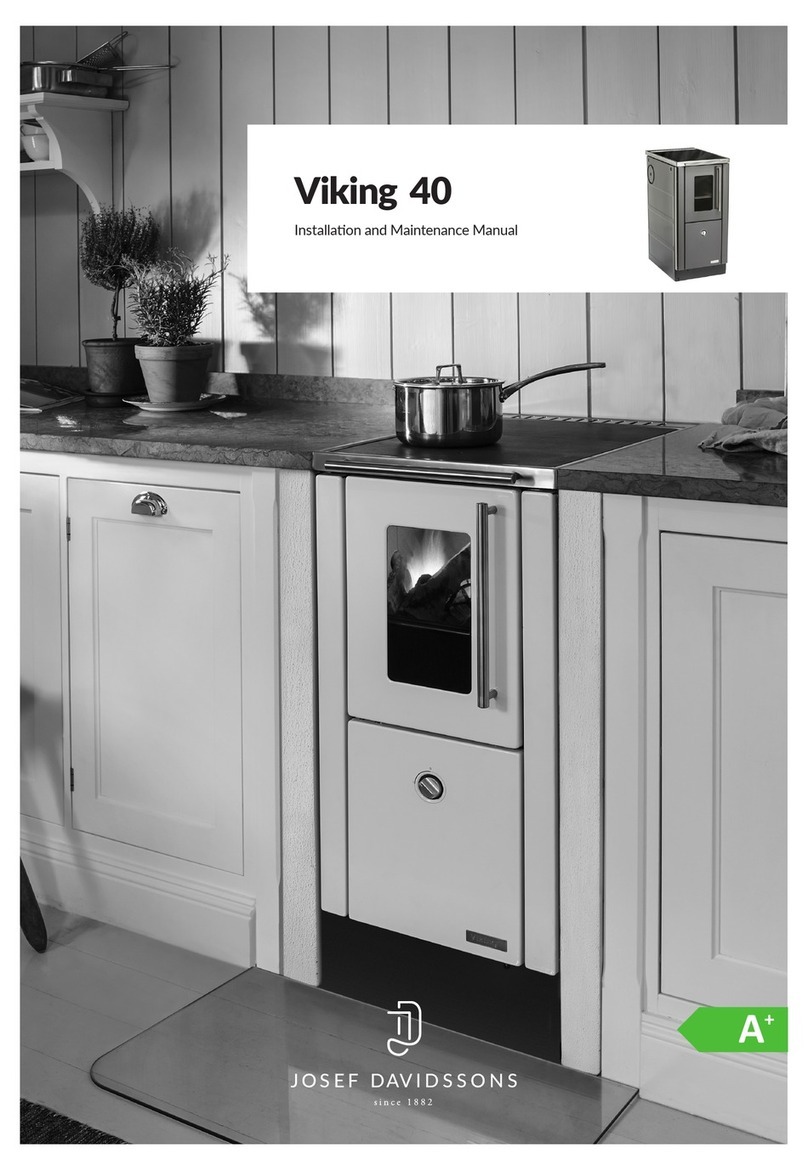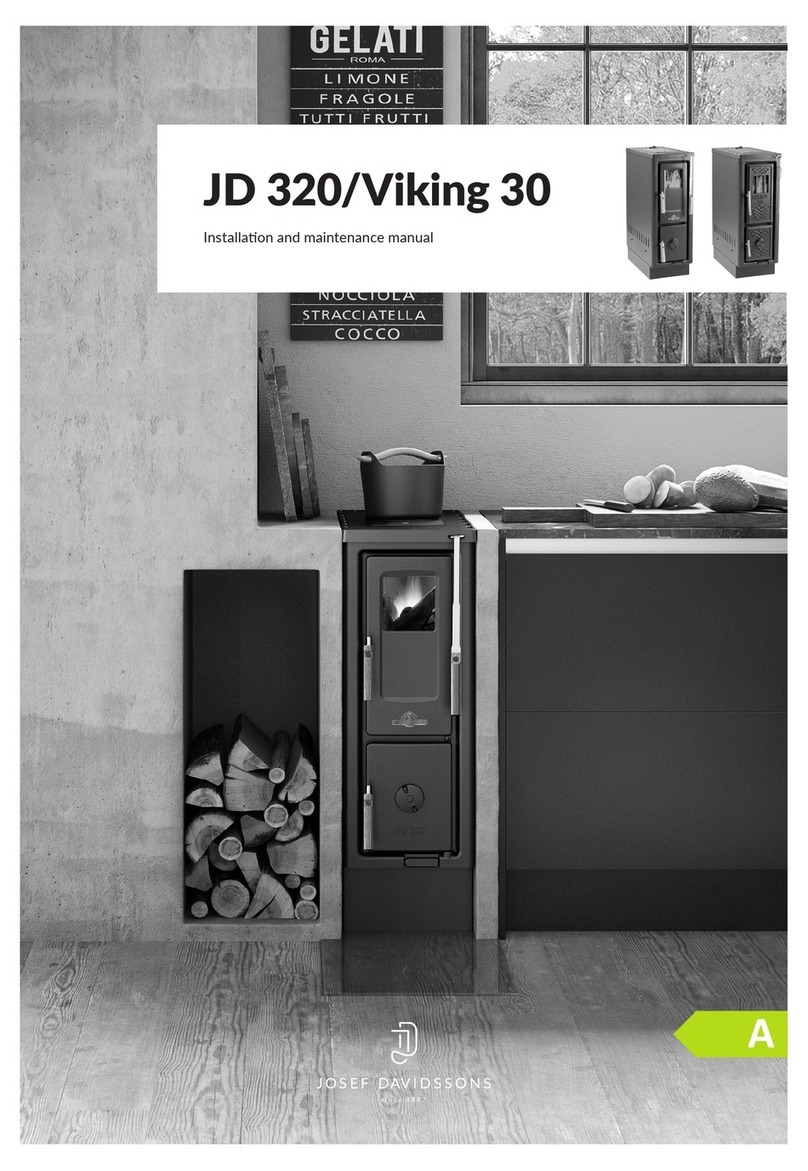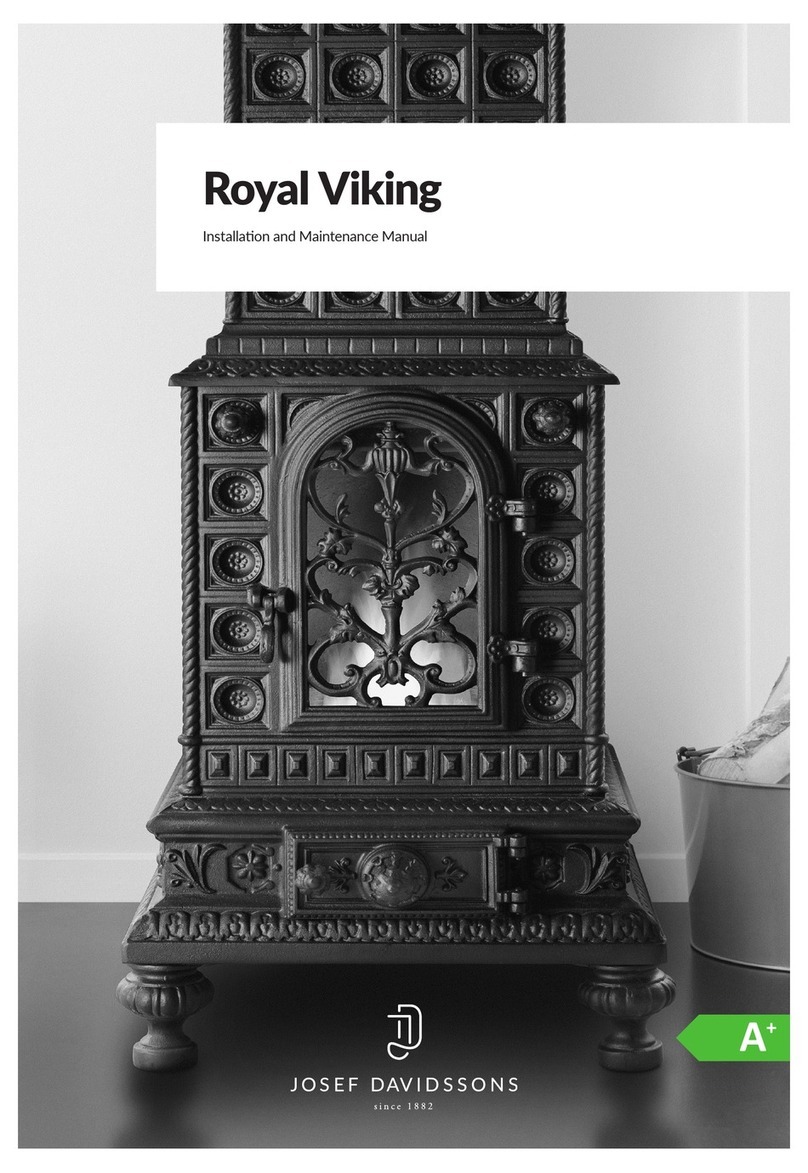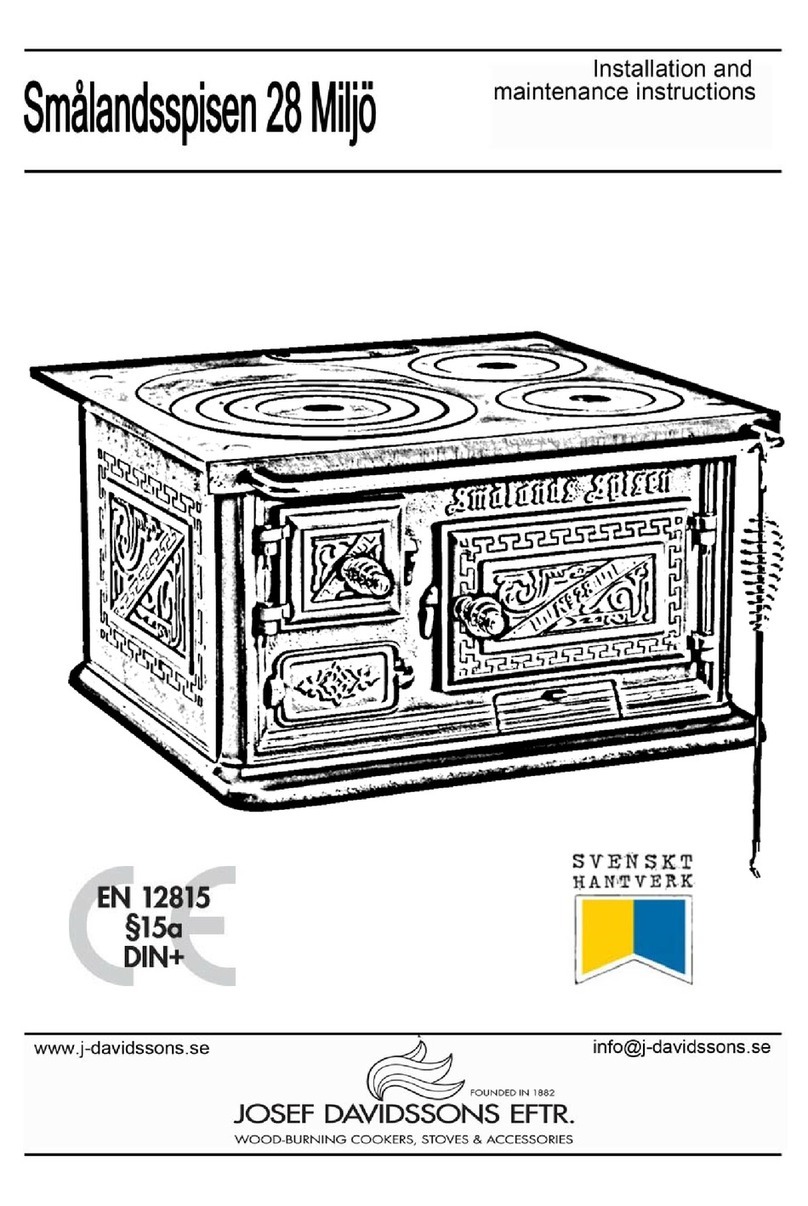
4
TECHNICAL FACTS
Efficiency (%) 83
Nominal Power (kW) 4.5
Heang surface (approx. m²) 30-70
Weight (kg) 160
Oven size (WxHxD mm) 320x185x490
Log length (mm) Max 380
Flue pipe dimension (Ø, mm) 190x75
Rear connecon Ø125 top connecon
Distance to combusble material See page 10-11
CE marked according to standard EN12815
TECHNICAL FACTS
Efficiency (%) 83
Nominal Power (kW) 4.5
Heang surface (approx. m²) 30-60
Weight (kg) 119
Oven size (WxHxD mm) 280x165x425
Log length (mm) Max 330
Flue pipe dimension (Ø, mm) 175x75/
Rear connecon Ø125 adaptor
included with top connecon
Distance to combusble material See page 10-11
CE marked according to standard EN12815
TECHNICAL FACTS
Efficiency (%) 83
Nominal Power (kW) 3.5
Heang surface (approx. m²) 20-50
Weight (kg) 94
Oven size (WxHxD mm) 235x140x370
Log length (mm) Max 290
Flue pipe dimension (Ø, mm) 155x78/adapter
Ø125 adapter included
with top connecon
Distance to combusble material Se page 10-11
CE marked according to standard EN12815
Professional mounting
The manual contains instrucons on how to mount
and install your wood burning stove. To ensure the
funcon and safety of the range, we recommend that
installaon be carried out by a professional. Contact
one of our dealers who can assist with the installaon
or recommend a suitable technician.
Planning permission
When installing a replace and building a chimney,
planning permission must be applied for with the
municipality's planning commission. Contact your local
planning commission if you are unsure of how the
applicaon works. Informaon is also available on your
municipality's website.
Load-bearing substrate
Make sure that the ground oor in your home has
sucient bearing capacity for a wood burning range
with a chimney. Normally, a wood burning range and
chimney can be placed on a standard wooden frame
in a single-family house if the total weight does not
exceed 400 kg.
Outer hearth
Ember coming from the range poses a risk of re.
If you have a ammable oor in front of your wood
burning range, it must be protected by a hearthstone
that covers at least 300 mm in front of the door and
100 mm along each side. The hearthstone can consist
of, for example, natural stone, concrete, sheet metal or
glass.
The specied safety distances in this manual apply
to the Swedish market. If the wood burning range is
installed in another country, the local regulaons must
be met.
When burning, some areas of the wood burning range become very hot and can cause burns
when touched. If ammable material is placed closer than the specied safety distance, it can
quickly catch re. Smouldering res can quickly cause gas to ignite, with the risk of injury to
persons and property.
The installaon must be inspected by a
competent chimney sweeper before using the
range.































